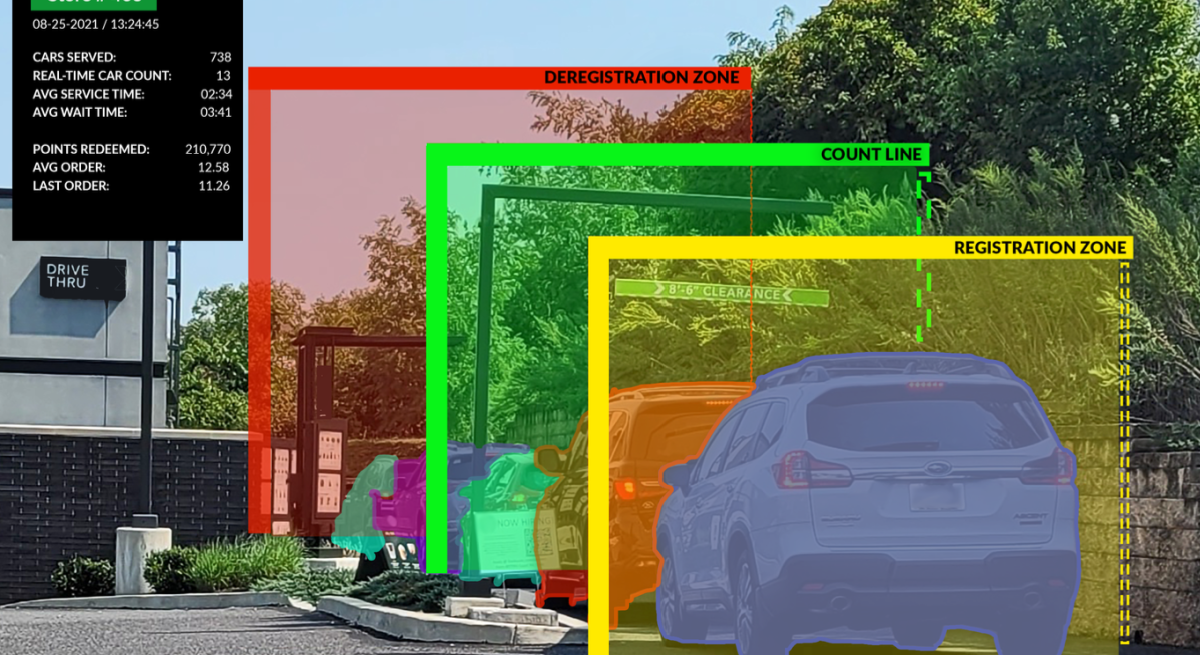The Drive-Thru Customer Experience Revolutionized Through AI
3 Min Read By Carlos Anchia
The ongoing COVID-19 crisis has not only transformed the global social, political, and economic climate, but has also changed how businesses operate. Restaurants were especially hard hit, and as the dust settles on the pandemic’s impact on the industry, they are forever altered. As a result, many beloved restaurants have permanently closed, there is an industry-wide shortage of labor, and the future is still shrouded in uncertainty.
Last year completely upended how customers ate: Quick Service Restaurants (QSRs) heavily relied on drive-thrus for business. Joe Erlinger, head of McDonald’s U.S. Operations, told analysts in April 2021 that more than 90 percent of their business was generated from their drive-thrus. According to data from the NPD Group, fast-food chains dominated the restaurant market for 12 months ending in March 2021, gaining 7.1 percent of the market share that full-service restaurants shed.
Pre-pandemic, strategic investments in dine-in were justified as dine-in represented the largest contribution to revenues. But, almost overnight, restaurants saw their revenue percentages flip and were forced to pivot from dine-in to primarily drive-thrus, curbside pickups, and deliveries. With urgent, newfound needs to serve pandemic-era customers while delivering high-quality experience, restaurants are looking to new sources of data and insights to help them optimize efficiency and ensure they are well-positioned to manage the sudden change in focus from interior dining to exterior services.
Restaurants have turned to technology to fill the gap. The obvious problems to tackle were traffic control and speed of service. Dan Cathy, the CEO of Chick-fil-A, recently estimated that about 30 precent of drive-thru customers are driving off, abandoning the wait, because the lines are so long, something human observation and traditional means of data, like sales, cannot completely capture. Restaurants need to view, analyze, predict and act based on real-time context securing positive customer experiences.
The key is to leverage tools that businesses might already have – and enhance it to meet key customer goals. This is where the rubber meets the road for vision AI. QSRs already maintain exterior video cameras and can easily convert this infrastructure into data streams for computer vision. Vision AI models can uncover previously unseen operational efficiencies and deliver high-quality – accurate insights to inform decisions. The use of video cameras with AI-powered analysis of visual data is an emerging combination of technologies that allows for evaluation, prediction, and action based on what's happening in real time in drive-thru lines and curbside pickup areas.
Possible applications include:
- Accelerate Drive-Thru Line Performance: Monitor lines, classify activity, and accurately log desired measurements, from the time a vehicle arrives to the time orders are received, and a vehicle departs. By detecting customer visits, understanding frequency, and combining this with other criteria, QSRs can improve immediate service and long-term planning while proactively informing customers of wait times, specials, and updates for increased customer satisfaction.
- Improve Customer Service: With real-time and predictive insights into service volumes, QSRs improve customer experience and fulfillment times by setting customer expectations with notifications of accurate wait times by location. Crews can be informed by automated detection and alerting of line arrivals, volume, and wait times. These insights are not limited to single locations, because real-time data can be collected and analyzed from many cameras across multiple locations..
- Reduce Staff Burnout and Stress: Automate predictive ordering and faster fulfillment by fusing information across point of sale, weather, location, etc., with real-time video to inform crews to act on wait time predictions before thresholds are met. Managers can act on these insights to manage staffing needs to facilitate delivery of good service and avoid burnout.
This pandemic has had a transformative effect on the ways restaurants deliver service for customers globally. QSRs that identified the shift in customer behavior early and innovated quickly are succeeding. As a result, they have realized an increase in drive-thru revenues. As service delivery continues to evolve throughout the different phases of the pandemic, QSRs are investing to secure their increased revenues while dine-in and traditional service operations are welcoming back patrons. By unlocking the value of existing video cameras and visual data collection, QSRs can strengthen their positioning, maintain their competitive advantages, and secure revenue gains with real-time AI-powered insights.


